
Our latest T-Boy Society of Film & Music poll will be of discovery; that is the first time you ate an unknown (to you) International or Domestic food.
It’s always fun to see our esteemed members’ selections, giving us a unique insight into their world.
Susan Breslow | T-Boy writer:
The physical sensation was psychedelic.
The first time I bit into a Szechuan pepper, I thought my friends would have to call the EMTs. This was at Szechuan Taste, a long-gone Chinese restaurant on Chatham Square in New York’s Chinatown. My mouth was on fire, and the physical sensation was psychedelic; I could practically feel concentric rings of flame. Neither water nor milk could quell the heat; it simply took time. And I learned my lesson to always check for peppers in Chinese food so that the experience would never recur.
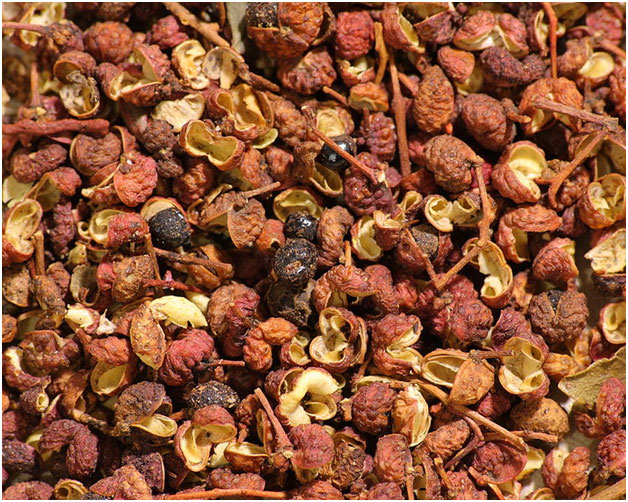
T-Boy note: The application of Sichuan Peppers (English, Szechuan) to food in China dates back more than two millennia. When eaten, it produces a tingling, numbing effect due to the presence of hydroxy-alpha sanshool.
Weave Cleveland | T-Boy writer, musician, composer and Travel Guys cinematographer:
I hate your kind but I’ll eat your food.
I have a Filipino friend who grew up in Texas. He was used to prejudice. He’s a very funny guy. He made a run of T-shirts that read I HATE YOUR KIND BUT I’LL EAT YOUR FOOD. To this day I regularly run into people that have racist views but love ethnic foods.
When I was 17, I joined my 16-year-old girlfriend on a trip to Vancouver to visit her Scottish relatives. At dinner we were eating something delicious but had no idea what it was. Her aunt replied, Haggis. I remember liking it but I also never plan to eat it again.
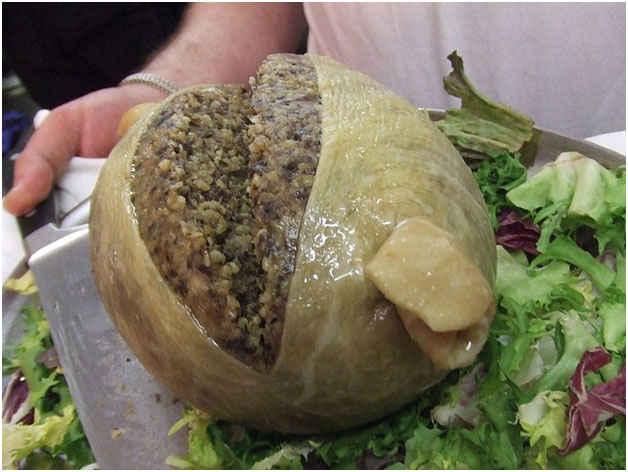
T-Boy note: Haggis is a savory Scottish pudding containing sheep’s pluck (heart, liver, and lungs), minced with onion, oatmeal, suet, spices, and salt, mixed with stock, and cooked while traditionally encased in the animal’s stomach, though today generally in an artificial casing. As the national dish of Scotland, Haggis is traditionally served with “neeps and tatties,” and a wee dram of whisky.
James Boitano | T-Boy writer:
Oysters on the Half Shell on the Atlantic Coast of France.
While I’d certainly heard of and even eaten oysters before, they were always cooked. The idea of cracking-open a live oyster and eating it raw on the half shell was something this 17-year-old had never imagined. That’s until this Seattle boy was spending a year as an exchange student in France. During my year, I visited a family in Bordeaux. The host mother treated me like an adult and one day when everyone else was busy, took me to the seaside resort of Arcachon.
There for a mid-afternoon snack, she took me to a beachfront café where the oysters were served, live and on ice, with a freshly sliced baguette, salted butter and even a glass of chilled white wine. My goodness, I sure felt like quite a grown up. As the sea air blew over me, I tasted the salty oysters as they went down my throat. It was delicious and such an adult experience that I will never forget. But they never again tasted quite so good as that first time when I was just a young lad.

T-Boy note: Arcachon Bay oysters had long been savored since Roman times, but it was not until the 19th century that the oyster became popular. Today, the Arcachon Bay has 26 oyster farms, and about 700 acres of oyster beds that produce 8,000 to 10,000 tons of oysters per year. Rich in minerals and vitamins, this shellfish with delicate and tasty flesh, particularly popular at New Year’s Eve, is eaten raw, plain or with a squeeze of lemon.
Ruth J. Katz | T-Boy writer:
I’m not terribly adventurous with food.
But, I remember vividly my first time faced with an artichoke. I was young and completely flummoxed. I had actually seen them growing at our neighbor’s house, in his vegetable garden–on long stems. For the record, in Italy, when you buy artichokes, you get that long stem. Here in America, you do not.
So, there I was, faced with this “flowering” green thing. I waited and watched what everyone was doing — and then I just copied how they attacked the beautiful, verdant orb. To this day–and I make artichokes a lot when I see them in the market–I think of that day. They served them cold, with sour cream as a dipping accompaniment. Soon, I was off and running, serving them more traditionally, with melted butter. And these days, I do not need anything with them–they are so sweet and meaty. I love when the green grocer has HUGE ones–the size of a football (well, not quite), and then I’ll cook up three or four of them and keep them in the fridge–each makes a wonderful luncheon. And since that time, I have taught so many friends how to prepare and make them. They are utterly delicious.

T-Boy note: The artichoke is a 3,000-year-old vegetable believe to be found in the Mediterranean area. Renowned for its potent medicinal properties, the ancient Greeks and Romans valued the edible blossom as ‘food for the Gods’ and reserved for the aristocratic alone.
Michael Rand | T-Boy writer, musician & filmmaker:
Beef Tongue at Canter’s Deli, Los Angeles.
I was 8 years old. My mother tricked me and told me it was corned beef. I didn’t ask for seconds.
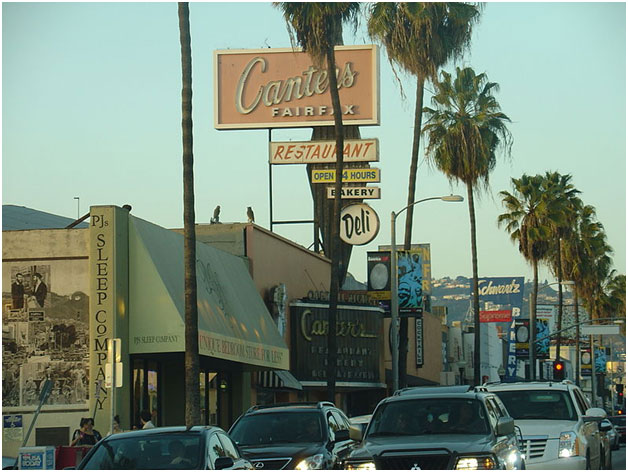
T-Boy note: Beef Tongue has a long history, with archeological evidence that East Africa’s were enjoying wildebeest tongue as long as 2.5 million years ago. Canters, a deli in Los Angeles, is famous for its selection of meats, and also as the birthplace the rock band, Guns N’ Roses.
Fyllis Hockman | T-Boy writer:
Something with whom I was making eye contact.
So I was at a travel writer banquet in Guilin, China faced with a vast variety of unidentifiable food — some of which I braved through; others not. I gingerly picked up a fried bee with my chopsticks and as I brought it towards me, I paused. I clearly could not eat something with whom I was making eye contact. Gingerly, I put it back.
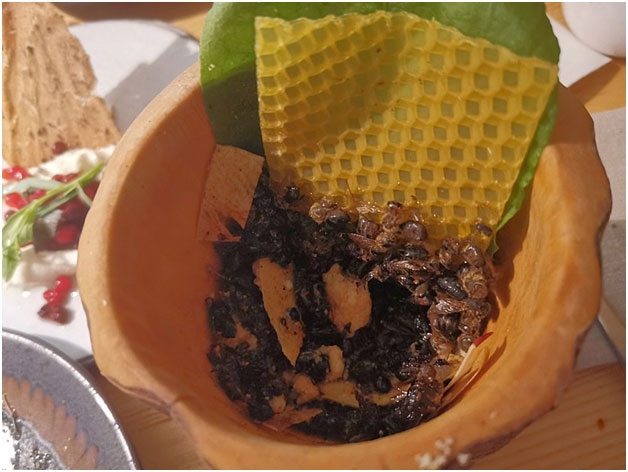
T-Boy note: Throughout the history of humankind, eating insects has been popular in utilizing this valuable commodity. Bee larvae are commonly eaten in many countries as they are edible, don’t taste bad, and are packed with nutrients. It turns out eating the larvae is probably the safest and more nutritious way to eat bees. They are moister, less crunchy, and don’t have a stinger!
Sandy Lorrigan | T-Boy writer & former director of Sitka Tourism:
Raw oysters at the Judge Roy Bean Saloon in Daphne, Alabama.
It was a LONG time ago and these cobwebs are pretty broken inside, but I believe my first “unknown to me” were raw oysters (ewwwww and gross) at Judge Roy Bean’s in Daphne, Alabama. The saloon-styled wood and tin hangout, burned down in 2005. It was neat place — used to have goats in the back enclosed area, and was the first time I heard of some “guy” named Jimmy Buffet come in and play (unscheduled and I didn’t know who he was, but he lived in the area).

Richard Frisbie | T-Boy writer:
I Was a Fava Bean Virgin.
As one of seven Journalists in a group of 180 travel agents I got to experience a cattle-car FAM trip to Sardinia firsthand. If it wasn’t for the exotic destination, an off-the-beaten-path Italian island in the Mediterranean just below Corsica, I never would have agreed to that rat race. But Italian Tourism promised separate chauffeured limousines for the journalists, and upgraded accommodations and special culinary events, so I couldn’t refuse.
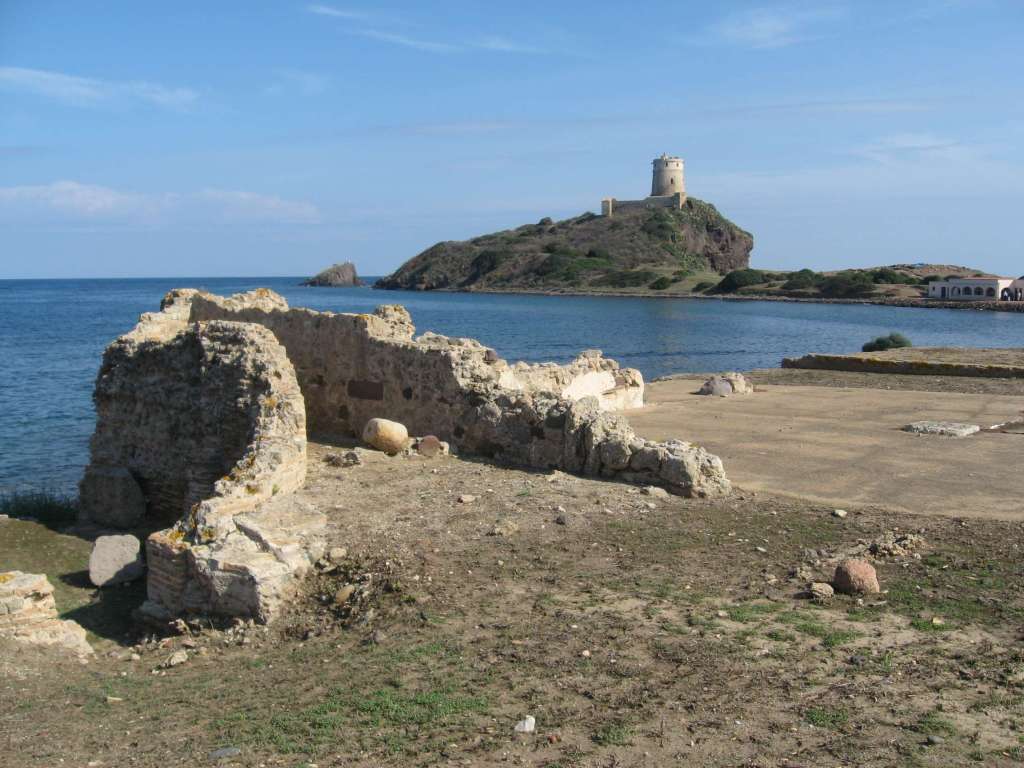
Sardinia is breath-takingly beautiful. Our personal guide knew everyone and everyplace to take us to experience island life and culture. Most of the time we had our own car and driver, choosing to go to some amazing places, but on one occasion we were joined by the busloads of travel hoi polloi in a rustic agrotourism farm for some local, farm-to-table fare.
It was a walled compound, charming with covered trestle tables along one side facing an interior grassy planting of fig trees. A similar open-sided shed sheltering farm equipment that looked at least a century old commanded another side, and the white-washed residence, with what must have been a huge kitchen, took up the third side, with only bare walls and a huge wooden gate on the fourth. There was no planned seating, so we journalists commandeered an out-of-the-way table near the kitchen which we figured would be quieter and with the best service, leaving the others to fend for themselves in a fight for the scenic outside tables. When it started to rain we laughed because our “undesirable” table was the coziest and driest spot on the farm.
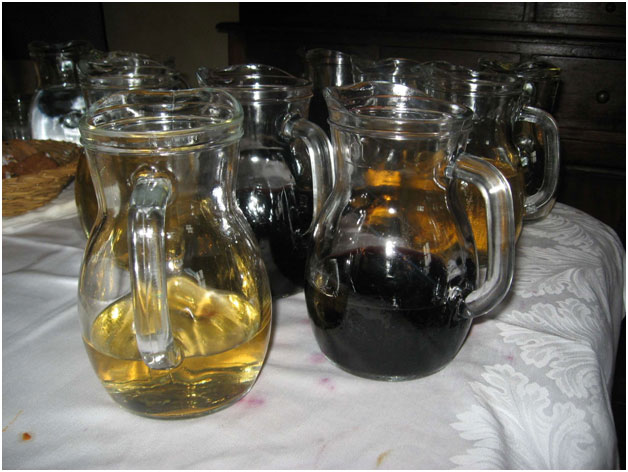
The serving was like the seating, family-style. I sat at one end with the most engaging and glamorous woman named Olivia at the other. She looked and acted like she should be presiding over a huge Italian dinner, making her a gracious hostess. It was a delight to look down the table at her, admiring from afar. We had some empty seats, so I found the nicest couple in the travel agent section and invited them to join us, making us a party of ten counting our guide. They turned out to be part-time travel writers as well as travel agents, so we all got along like peas in a pod.
I liked the company and the food, but nothing stands out today except for one vegetable. Olivia was gushing over a bowl of beans, exclaiming everyone had to try them and circling the table clutching a dish, spooning ordinary looking very large lima beans onto our plates. One taste of the buttery and brothy beans – fava beans to be exact – and I was as excited as Olivia.
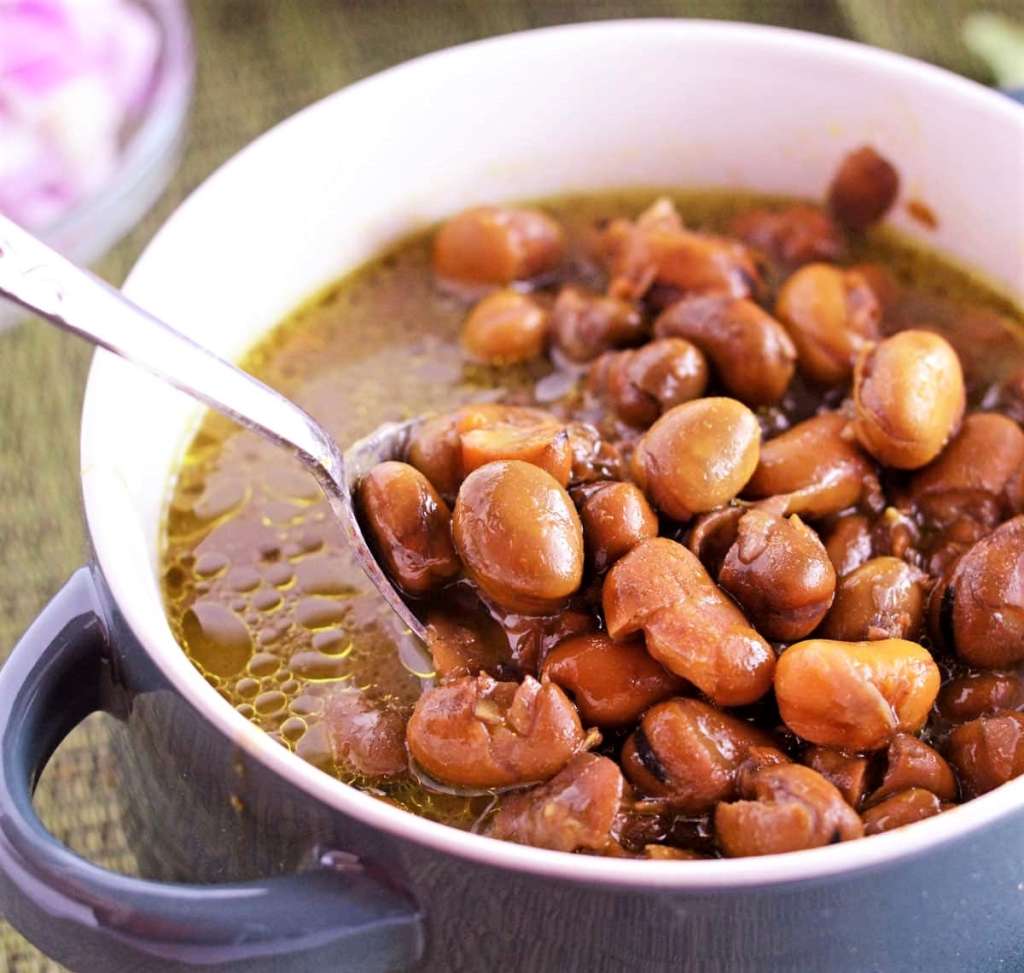
These were nothing like the dried or canned fava beans usually found in the states, no – these were freshly grown and harvested and cooked simply to show off their exquisite flavor and texture. Eating them was a transcendent experience. Looking around, I noticed many tables that did not share our enchantment, leaving their fava beans untouched. Of course, I rescued the beans from the philistines and shared them with my enthusiastic friends. While I was at it, I did the same with the untouched pitchers of earthy red wine scattered around the compound. Travel Journalists know how to party.
It was that meal that brought our tableful of strangers to the realization that we were all family, sharing the camaraderie and country cooking of Italy together as if we were born to it. I’ve tasted fava beans many times since, searching for that elusive essence of perfection I found in that rural farm, but I never felt the same lusty rush as on that rainy day in Sardinia when Olivia ladled fava beans onto my plate from a bowl cradled in her bosom.
Skip Kaltenheuser | T-Boy writer:
Endless culinary delights…
But not for me!
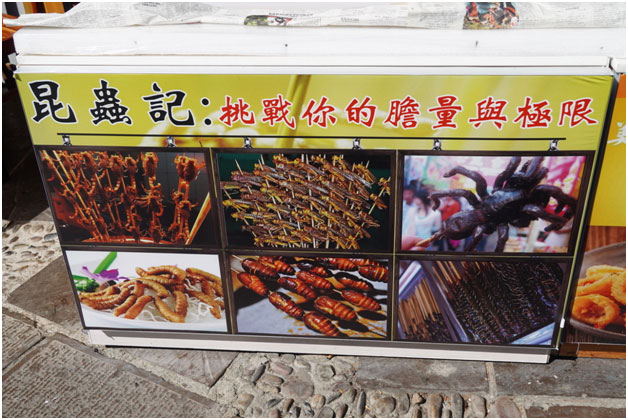
Raoul Pascual | T-Boy writer, illustrator and webmaster:
My first reaction to first foods.
SALADS – Growing up in the Philippines, I didn’t eat a lot of vegetables. I ate like a horse … well … more like a carnivorous horse. So when I came to the US and I saw salads as a meal item, I didn’t understand how something so light and tasteless would be even considered a meal. Until now, the most unfulfilling salad for me is a Caesar Salad. Without the dressing, that is not even a desert.
STEAKS – Now you’re talking. When I sunk my teeth into my first ever steak, it awakened the Neanderthal in me. When the fatty juice oozed out, I knew what I’d been missing all my life. Add a glass of red wine and buttered greens and I knew what heaven was going to be like.
BEVERAGES – I grew up with a tight budget. So, I always savored ice cold Coca Cola and freshly squeezed orange juice which were rare. But I had never tasted fresh milk until I arrived here in the US. Prior to that, milk was always powdered, condensed or evaporated. I loved it so much I drank half a gallon in one sitting. I drank it like water. I overdid it the first time (I think I’m lactose intolerant) so I was grateful that there was a bathroom nearby.
FISHES – I had always had fish growing up but it was mostly salted or boiled in a soup — never fresh. I was a teenager when I first tasted Japanese sushi with wasabe. I appreciated the clean fresh taste more than the taste which was too subtle for my buds. (Maybe it was the wasabe that burned my taste buds). It was also very expensive. One summer, I went to a semi-private beach resort in Quezon province in the Philippines. dragging a fish line as we sailed on a motor boat, we caught a 6-foot barracuda. They laid that sucker down a mat made of fresh banana leaves and cut that baby open. I had never had so much sushi in my life. It was amazing.
BEER – My Mom bought a large can of powdered Yeast because she read it was healthy for us. She mixed it in a glass of powdered milk and it was the worst thing I ever tasted. None of my siblings would drink it. It was also very expensive. So, being the official garbage collector, I gulped down every single milk-yeast concoction. Halfway through the can, I had gotten used to the taste so by the end of that nightmare it wasn’t that bad anymore. Years later, my brother and I were handed a bottle of beer for the first time. He didn’t like the bitter taste. I didn’t particularly like it but the taste reminded me so much of that milk-yeast drink so I was able to finish my bottle. To this day, I’m not really a fan of beer but it’s something I drink in social gatherings.
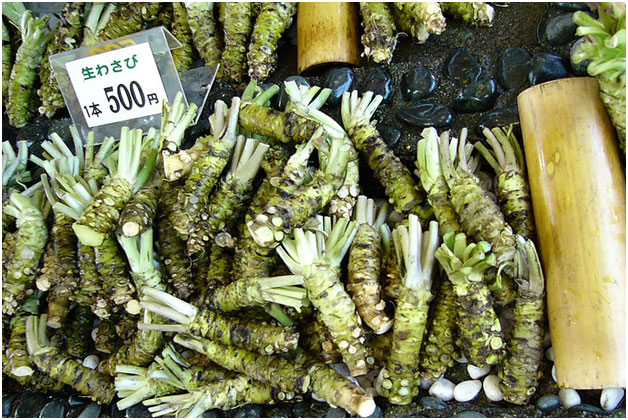
T-Boy note: Wasabi, also called Japanese horseradish, is a plant of the mustard family, which features pungent due to its ground rhizomes. The plant is native to Japan, South Korea, and Sakhalin, Russia, and its cultivation is limited because of its specific growing requirement.
Ringo Boitano | T-Boy Writer:
Fresh anchovies (acciughe) at the Cinque Terre.
In the early afternoon I would watch local fishing people almost stumbling into restaurants and bars for an espresso. The stumbling, I should add, the result of an important day-long of rest due to the intense nocturnal hours of fishing, often times on a rugged sea. Later, I was rewarded by their catch of the night for an introduction to a small, green fish called acciughe, which soon blessed my dinner plate each evening. And, yes, they are different than those packed into a tin can.
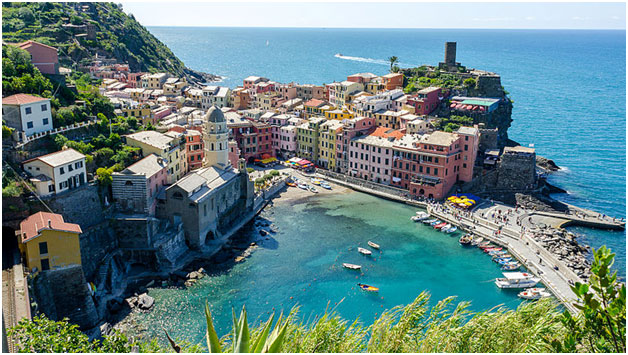
Earlier, after I’d completed my trek to each of Cinque Terre’s terraced hillside towns – Monterosso, Vernazza, Corniglia, Manarola and Riomaggiore – I noticed that some featured unique culinary styles of preparation. And I had to try them all: acciughe marinated, acciughe salted, acciughe butterflied and deep-fried acciughe, with a full-flavored garlic/vinegar sauce called Giada. My favorite main course was Tegame alla vernazzana, a layered, casserole-like dish of whole acciughe, potatoes, tomatoes, white wine, oil, and herbs.
Upon my arrival back to the states, I decided that canned anchovies were only fitting for a Caesar Salad. But then remembered that Caesar Cardini, who created the world’s first Caesar Salad at his Tijuana sports bar in 1924, only added canned anchovies months later (some say it was his brother who secretly slipped them in). Though designed as a snack, Cardini insisted that the salad be prepared by a waiter at your table, often times himself, with the protocol of smearing condiments on long, unchopped leafs of romaine lettuce, intended to be eaten with your fingers. Perhaps I should add that chopped lettuce eaten with a fork is only a Caesar Salad imposter.
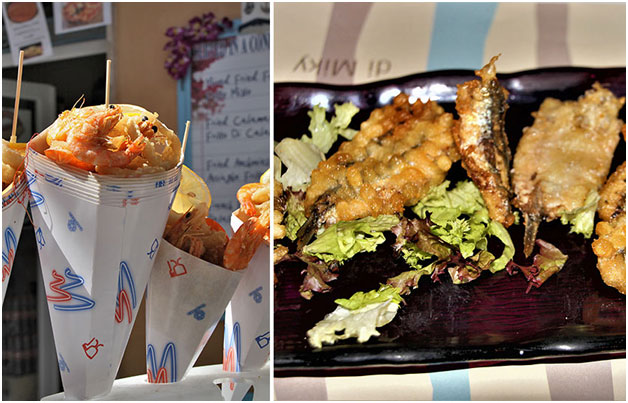
T-Boy note: Cinque Terre’s anchovies, referred to acciughe in standard Italian, are considered by some to be the most delicious in all of Italy. Due to the saltiness of the Mediterranean Sea, they are endowed with a strong but harmonious taste. They are also called bread of the sea or in the local dialect, “u pan du ma.” The small fish, though much larger than those from a tin can, arrive to the Italian Riviera’s Cinque Terre by way of the Atlantic Ocean every June. The best catch can be expected on the day of San Pietro, June 29.
Tony Chisholm | T-Boy Writer:
Fresh scallops from the sea.
Several years back I and a group of adventurous Canadians had embarked on a week-long sea kayak adventure in the Baja Mexico on the Sea of Cortez. Our jumping off spot was Loreto in the Baja. This was our second trip, and we loved the place. Especially being the on sea which was full vast varieties of fish and sea birds. At one point we were surrounded by a huge school of fish being chased by a much larger predator. The school near the surface split in two to throw off the marauder and one half took to the air all around us! Not a sight you see every day.
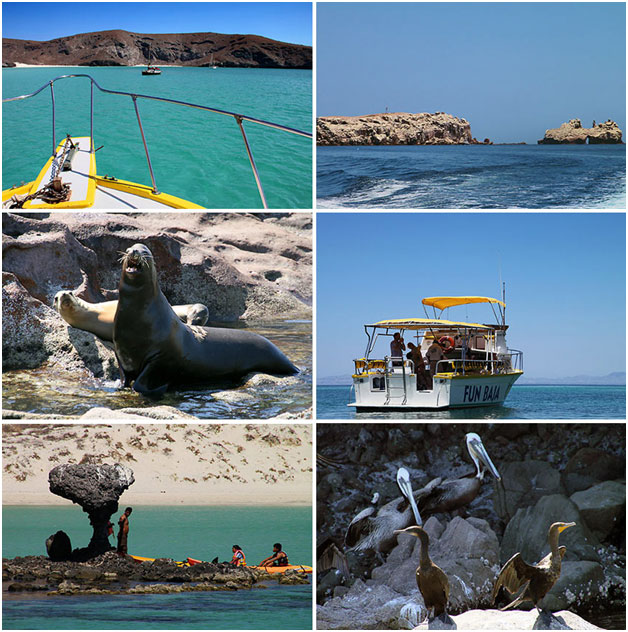
One day crossing a large bay, we came across a very noisy and smelly small fishing boat. Our guide explained that the noise came from a compressor on board supplying air to someone below walking on the bottom of the sea. Really? Yes, he was collecting scallops on the bottom. As he walked along with a bag, he picked up scallops that were then hoisted to the deck of the boat when the bag was full. On deck another person cracked open the shell (shucked) – which was then thrown overboard. These were sea scallops, and the edible part is the white adductor muscle. The rest of the scallop is discarded.
One of the guides was local and as we kayaked alongside the fishing boat, he bartered for some fresh scallops for us which had just been shucked. They were plentiful and huge. That night we cooked them over an open fire on the beach. They were so big we had to cut them into pieces to cook and I’ve never tasted anything so wonderful. Perhaps this had something to do with the fact we were camping on a perfect but very remote white sand beach. Or perhaps the flavour was enhanced by our hunger after a full day of kayaking in the sun on the open sea. Naaaa… they just tasted spectacular.
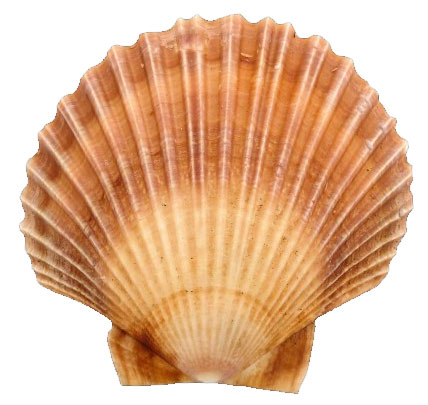
That night the fisherman came ashore at the other end of the beach. They slept all night under blankets and were gone early in the morning before the rest of us enjoying our holiday. The guide told us the men did not own the boat and they only received a very small pay for this gruesome job. The boat owner evidently made all the money. That explained why the men were so eager to deal directly with us for precious American dollars.
What a way to earn a living. Weighted down, walking on the bottom of the sea, breathing compressed air full of diesel fumes and searching for scallops all day. Probably fighting off sharks, just for a few centavos.
Those scallops were amazing and we ate them for four nights.
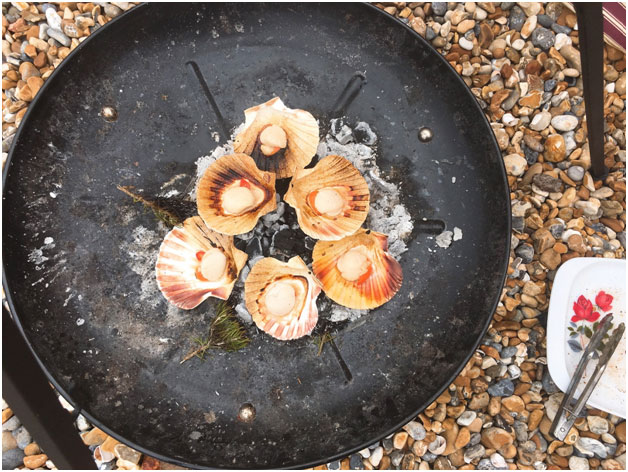
T-Boy note: The Silken Scallop (Leopectensericeus), is a member of the Pectinidae Family of Scallop Shells, known in Mexico as vieira de satinada. They are a classic fan shaped scallop with a rounded profile with a straight hinge and equal sized ears. To prepare: place one scallop in half-shell, along with a trickle of olive oil, a sliver of chili and garlic, and a splash of wine. Place the shells directly over the fire embers until ‘nearly cooked. Remove from the heat and they will continue to cook in the hot shells while you sprinkle over the parsley. Don’t throw away the juices in the shell, they are like nectar!
Ed Boitano | T-Boy editor:
A Tase of Ostalgie in East Berlin.
It was a fascinating step back into history, akin to traveling by a time machine to a preunification GDR restaurant. Nostalgia (Ostalgie) restaurants are now spread across the former GDR, popular with locals for a taste of their past, and curious tourists in understanding the simple dining experiences at the East German table. I looked at my menu and opted for pork chops, with sides of two epic boiled potatoes, and a spinach salad, dressed with a unique concoction from a tube of unknown substance. The chops were tough and rather grisly, and the boiled potatoes tasted like, well, boiled potatoes. The spinach salad was simple and unimaginative. And, the unknown substance in the tube, still remains a mystery to me today, but I was appreciative of the overall meal’s authenticity.
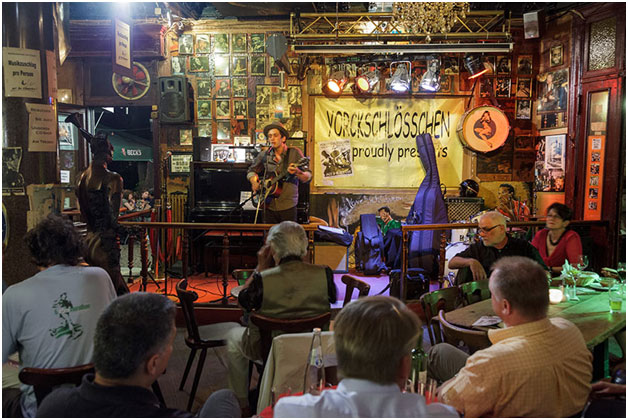
T-Boy note: Since the early 2000s, there has been a wave of nostalgic Ostalgie (a combination of the German words for “east” and “nostalgia”) restaurants opening in East Berlin and the former GDR. The key term is ‘ingredient restrictions,’ where communist comfort food was often born out of necessity. For more Ostalgie experiences, visit Berlin’s colossal war memorials, Checkpoint Charlie, drink Soviet-inspired soft drinks, and drive a smoke-belching Trabant, the GDR’s answer to the West’s Volkswagen, designed as “the people’s affordable car.”
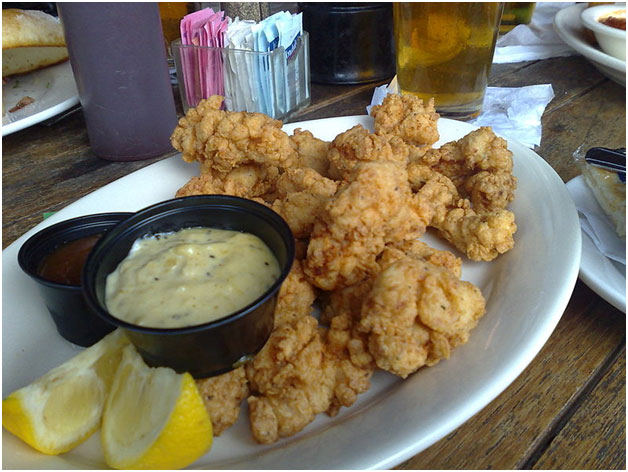
Phil Marley | Poet:
Eating Alligator with the Seminoles.
I was welcomed like a long-lost friend. Several members of the Seminole Tribe shared their thoughts on pride, identity, and the preservation of their culture… and also their tradition of eating alligator. The tradition also included seemingly eating anything else that moved in the Everglades, plus a variety of carefully cultivated grains, vegetables, roots and fruits. Their diet was also endowed by recipes from runaway African-American slaves who found refuge among the Seminoles. And how did the floured and fried alligator taste? Well, dare I say a bit like chicken, though I tried to ignore the repugnant pieces of alligator fat. Sorry, Mr. Boitano; everyone has their limit.
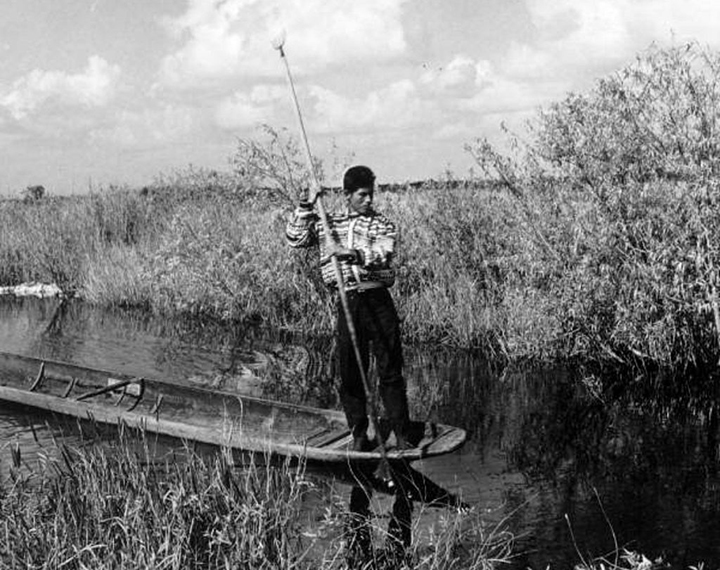
“Respect was our Creed with loyalty and trust. Now we crest new addiction with the white man’s lust. This is no longer a war it’s a Genocide. They’re slowly tearing us apart, this is my war cry.” – Author unknown.

T-Boy note: The Seminole people’s relationship with alligators developed 200 years ago in southern Florida. When the tyrant Andrew Jackson issued the illegal Indian Relocation Act, the Seminole Tribe found safety in the Everglades. By the 19th century, the tribe had practically (strategically) disappeared from Euro-American’s eyes; living in isolation deeper into Everglades, where they had learned to adapt to the dense, bug-infested, sweltering swamps. They never surrendered, never signed a peace treaty. The Seminoles are nothing less than a profile in courage, who outsmarted the U.S. government, whose aim was to forcibly relocate them to Oklahoma “Indian Territory.”
























